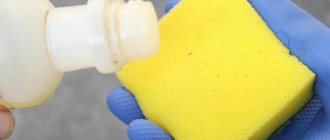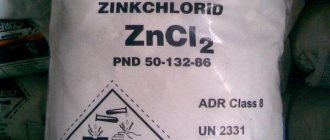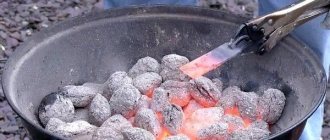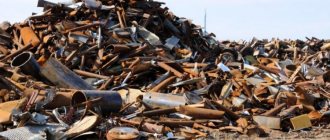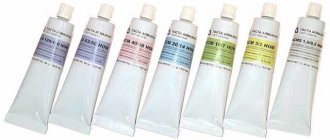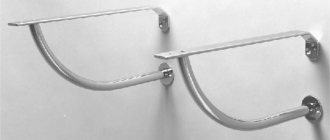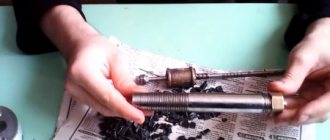Who doesn’t dream of having a stable income, but not spending most of their time at work and not being tied to the office 5 days a week? Recently, more and more people are thinking about organizing their own business at home; one of the most popular ideas is recycling plastic at home. With proper organization, such production will not only quickly return the money invested, but will also provide a constant income.
What can be recycled?
The basic substance of plastics is polymers. Do-it-yourself material processing is determined by the type of connection. Raw materials are combined into two large categories:
- thermoplastic - 80% of products (HDPE, PET, PP, PS, and others);
- thermosetting plastic – polyurethane.
The second type is not suitable for reprocessing. Thermoplastic heats up without loss of properties, acquiring its initial state.
The most used raw materials are PET bottles and plastic containers.
You can obtain information about the product by deciphering the markings. A numerical and alphabetic value with a triangle indicates the type of polymer.
Required tools and materials
To assemble the chopper, you will need metalworking, welding and grinding tools: drill, file, grinder. Welding joints are usually used to connect the frame and body, and bolted joints are used to attach the engine and cutting part. The materials you will need are metal elements:
- sheets;
- corners;
- stripes;
- pipes and profiles;
- hardware: bearings, bolts, pulleys, coupling (the list depends on the design).
A bucket or tank with solid walls is suitable for the storage tank to prevent the loss of fine particles. The rotary motor is connected to the shaft using a drive, and knives or circular saws are placed on the axis.
What do you need to recycle at home?
Special equipment for loading and processing plastic is expensive and is not suitable for home conditions. Handicraft production involves independent design of devices.
| International project Precious Plastic | Simple mechanism |
| Cutting plastic bottles in circles to obtain homogeneous fiber - raw material for recycling. |
Learn more about the rotary shredder
The most common design is the impact crusher. It consists of a rotor on which the knives are fixedly mounted. Under the influence of the driving force - from a diesel, gasoline engine or electric motor, the axis with knives begins to move and with quick blows crushes the raw materials that have fallen under the knives. Depending on the purpose, there are low-speed machines and high-speed units.
A sieve or grid with a certain mesh size is installed at the bottom of the working chamber, depending on the required quality and diameter of the resulting fraction. The raw materials are processed cyclically with knives and gradually pass through a sieve.
Particular attention is paid to the quality of the metal from which the knives are made - it should be good hardened steel, which prevents rapid wear and ensures that the sharpness is maintained for a long time.
Methods for destroying PET
Recycling is the processing of waste to obtain recyclable materials. The basis for the creation of PET products is polyethylene terephthalate, a petroleum product, which makes the disposal of plastic containers a necessary procedure.
Burning
Burning plastic is an economical way to convert waste into thermal energy and recycle the material. This heat is used to heat buildings. The calorie content of PET combustion is 22700 kJ/kg.
There are two opinions about the environmental friendliness of burning plastic:
- There is a release of hazardous substances (heavy metals) that cannot be collected.
- Unsuitable products belong to waste hazard class 5. When heated, toxins do not evaporate. The concentration of emitted substances during combustion is within the limits established by federal legislation. Gas toxicity - 0.032 nanograms.
To prevent environmental pollution, enterprises using this destruction method are required to obtain appropriate permits.
Granulation (obtaining pure flakes)
The method is intended for obtaining raw material flakes (granules).
The processed product is used in production:
- clothes;
- carpets;
- building materials;
- containers.
Where can I take waste PET bottles?
The cost of plastic waste ranges from 15 to 20 thousand rubles per ton. Containers sorted by color are more valuable. Large enterprises and small organizations that have received a license to handle recyclable materials accept plastic for recycling. Mesh containers for collecting bottles are installed in courtyards; they are used by conscientious citizens involved in separate waste collection.
Requirements for bottle preparation
Companies that buy PET waste put forward special conditions for accepting used packaging:
- No traces of paint, glue, or labels are allowed on the container;
- there should be no traces of fat (sunflower oil bottles are not accepted for recycling);
- bottles must be washed and dried.
Modern equipment
Devices from a domestic manufacturer, which require huge areas for placement and funds for purchase, can give “new life” to plastic bottles.
Today there is an alternative in the form of affordable equipment at home. The devices do not require large areas, do not provide the opportunity to receive a monthly profit of millions, but are the start of the development of such a business.
The processing system includes:
- shredder;
- agglomerator;
- extruder
Such a line will ensure a complete “reboot” of plastic bottles.
Shredder
The unit is designed for shredding plastic. Small particles are called “flex”. Industrial devices for these purposes have a high price (a simple crusher - from 135 thousand rubles).
Self-assembly of such a machine is not difficult. If home conditions allow, you can additionally place a centrifuge in the bathroom for drying and washing the flex.
On the market, the sale of the resulting raw materials is 30-40 Russian rubles. per kg, purchase – 20-30 Russian rubles/kg.
Agglomerator
The device is designed for sintering flexible material. The cost of industrial type units is from 200 thousand.
Production from scratch requires milling and turning operations. Most craftsmen organize alterations in garages and utility rooms, outside the zone of state sanitary and environmental control. Electric furnaces are equipped as a functioning chamber, since the flex can be melted at a temperature of 180 degrees. Particularly relevant are designs developed according to the drawings of Dave Hakkens.
Extruder
The device was created to produce products in the form of granules used for transformation. The essence of the work is as follows:
- Loading raw materials into the chamber.
- Heating to a state of plasticity (liquefaction).
- Filter cleaning.
- Thread output.
These threads are the basis of various products.
Homemade extruders from Dave Hakkens are combined with a press and allow you to immediately produce objects. The ability to cast a mold is provided by a screw, which, under pressure, displaces heated liquid plastic into the container of the desired model.
Safety precautions when working with a shredder
Sources of danger in the operation of a shredder are: the cutting device, flying crushed particles, and the structure itself. The cutting device is dangerous if the operator has free access to its elements. The entry of human limbs into the working knives is prevented by covering this part of the structure with a casing.
An additional protective measure is to install a loading channel longer than the size of a person's limbs to physically prevent intentional or unintentional penetration of cutting devices. In addition, when working, you must follow a simple rule: turn off the power source if the shredder is not working. This will help avoid injury when cleaning the cutting device if, for example, it works by applying force.
The casing around the cutting device will protect not only from cut injuries, but also from flying chips. For the same reason, the output channel must also be made in the form of a closed casing so that the crushed particles fall into the storage tank in an orderly manner. The structure itself poses a danger in the event of destruction, which occurs due to insufficient fastening or excessive vibration. You can avoid destruction with the help of reinforcing elements: a rigid base, corners, metal strips.
vote
Article Rating
Recycling process
Plastic recycling has become an industry for specialized companies. Most often, waste is processed locally or transported to specialized enterprises.
The need to destroy such waste has been confirmed by a number of government programs around the world.
Due to the relevance of cheap raw materials, people are trying to take advantage of the chance to earn money at home. This choice raises several problems:
- lack of suitable equipment;
- toxicity of plastic in work;
- difficulty in collecting and preparing material.
The goal of a home craftsman is the production of raw materials or finished products. Despite the difficulties, the processing of recycled materials from polymers has positive experience. Replenishing the family budget with plastic is quite possible.
Preparation of raw materials for disposal
The processing technology consists of the following stages:
- Accumulation of material.
- Grinding until smooth.
- Heating/melting.
- Production of granules.
- Manufacturing of products.
The implementation of the last two points can be combined into a single process.
Grinding devices do not have a large turnover, so their number on the market is small. The device is created for industrial purposes and has the following characteristics:
- loading of considerable volumes;
- power and performance;
- high price;
- dimensions.
The main features of specialized equipment determined the desire of enthusiasts to create homemade installations.
Do-it-yourself plastic crusher - drawing up a project and assembling homemade equipment
Plastic processing is one of the freest niches for doing business in Russia.
However, the issue of opening it most often depends on the cost of the equipment.
Entrepreneurs often start not with a full processing cycle with finished granulate at the output, but with the collection and grinding of polymer waste.
Even then, purchasing a shredder and/or crusher may not be affordable. One of the most discussed solutions to the problem is making your own shredder.
Such projects are quite feasible if two “constant quantities” are known - raw materials and product.
Next, we will talk about how to make a shredder and how to avoid gross mistakes when designing and making your own plastic crusher.
Assembly of finished units
In order for the design to be repairable, the body should not be welded.
It is better to make a bolted connection.
Then the chopper can be disassembled at any time for resharpening or replacing knives.
One of the common problems with rotating mechanisms is increased vibration.
To avoid this phenomenon, it is necessary to align the actuator, gearbox and motor, i.e., align their axes.
Another reason for vibration is imbalance (imbalance) of the rotors. To eliminate it, you need to carry out balancing.
We invite you to watch a video on how to implement the idea of a plastic recycling business using homemade equipment:
Conclusion
Not all the difficulties that will have to be encountered in the process of designing and assembling a plastic shredder have been considered.
Manufacturing can only be called independent, since it requires a whole fleet of machines, and some units have to be purchased assembled. The whole process can take months, and financial investments will be required in any case.
Those who have already had experience in manufacturing shredders believe that the idea is justified in two cases: if there are no strict time restrictions or if it is planned to establish serial production of such units. For practical plastic recycling tasks, it is usually easier to choose a ready-made model.
Products made from plastic bottles
To realize creative ideas, a homemade “bottle cutter” will come in handy. Masters will need:
- blades;
- washers;
- wood base.
Spools for the resulting thread can be made from bottle necks.
Plastic tapes are used to produce ropes and tubes. In the southern hemisphere, plastic covering is popular. Polymers are used to create paving slabs, nets, walls and much more.
About the benefits of home creativity
Fantasy can turn a trough into a car. After construction, it remained to build a beautiful wooden carriage from the scattered beams.
The wooden structure is suitable for landscaping. You can collect everything from improvised parts.
The advantages of such creativity have different sides:
- financial - money is not spent, but the object is purchased;
- Aesthetics - beautifully made things change the interior;
- Education sets a good example for the younger generation;
- creative - the embodiment of fantasy does not make life boring.
How to build a car with your own hands is explained in the instructions in the following video:
Page 3
It's nice to have your own country house or villa with beautiful green lawns and even paving slab paths.
If you don't have a lot of money to spend on this decorative item, you can go the extra mile and build a vibrating table for making floor tiles yourself.
Business plan
Work planning is reflected in a document - a business plan, which explains the primary and secondary aspects.
Information about future production is grouped according to the structure:
- Title page - information about the organization:
- Name;
- type of property;
- legal and actual address;
- contact means of communication (telephone, email).
- Copyright - business plan developer.
- Summary – meaning of ideas:
- summary;
- sources of financing;
- ways to translate into reality;
- uniqueness of the project;
- forecast;
- profitability;
- efficiency.
- The goal is to provide services (products):
- advantages;
- flaws.
- Analysis (marketing research).
- Industry production is a complete description of the enterprise.
- Product Summary:
- Name;
- description;
- intended purpose;
- scope of use;
- technical aspects;
- environmental friendliness;
- exploitation;
- certification;
- service maintenance.
- Sales of products, advertising.
- Features of the production process:
- working structure;
- technology;
- square;
- raw materials;
- equipment;
- generation capacity;
- choice of companions.
- Regulatory regulation.
- Financing:
- investments;
- profit;
- taxation;
- lending.
- Analysis of risk levels.
- Applications.
The organization of business activities must comply with the requirements of current legislation. Not only personal interests are taken into account, but also public opinion.
Application of recycled PET
A wide range of products are made from recycled materials:
- filaments for three-dimensional printers of various colors: they produce mini-extruders for home recycling of plastic bottles;
- polyethylene film: it is called secondary, used for technical and agricultural work;
- soft packaging: it is prohibited to pack only food products;
- garbage bags;
- hard and soft mesh containers for vegetables or fruits;
- fibers and rods for the production of brushes and whisks;
- fillers for finishing and paving slabs;
- household containers (buckets, tanks, containers);
- household items (compactors, garbage scoops, funnels for petroleum products, dispensers);
- sewer pipes;
- chain-link mesh for light barriers;
- abrasives: it is mixed with crushed plastic bottles in an extruder;
- twine and packing tape;
- polyester: many fashion houses produce clothes made from recycled plastic bottles.
When using recycled plastic, production costs are significantly reduced. The amount of waste is reduced. For example, it takes 20 bottles to produce one T-shirt, about 50 pairs of sneakers. In some European countries, the volume of goods made from recycled plastic reaches 60%.
Advantages and disadvantages of home recycling
| pros | Minuses |
|
|
PET collection and recycling business
Visionary entrepreneurs have long seen the advantages of a PET waste recycling business. By purchasing equipment for processing plastic bottles and opening their own mini-factory, they receive sufficient profit.
The recycling business niche currently remains quite empty. The volume of discarded PET waste is only growing from year to year, which means starting a business would be a smart decision.
We should not forget about the authorities who are interested in the cleanliness of the territory under their trust. An entrepreneur can receive various benefits when organizing a business for recycling plastic bottles.
Preferential conditions and subsidies are generally a feature of any business related to recycling.
Sources of raw materials
Even before completing the documents, it is worth solving the problem of finding raw materials.
PET waste collection is carried out in several ways:
- Concluding an agreement with landfills.
- Organization of collection points for PET bottles from citizens for a symbolic fee.
- Installation of containers for plastic bottles within the city.
It would also be a good idea to think through the process of transporting raw materials to the place of storage and processing.
Preparing for the opening
Before registering, you need to choose a form of business based on the planned production volumes: individual entrepreneur or LLC. The type of activity is called processing of non-metallic waste.
The next step is to find premises for the workshop. Here it is worth paying attention to the inexpensive quadrature of the industrial zone. Help from the administration may be useful in providing a place for recycling.
Necessary equipment
Having decided on the place of production and a convenient form of business, you should worry about purchasing equipment for processing PET containers.
You can purchase used machines or order new ones. Many companies offer installation services, which include delivery and installation of a processing line, debugging and production of the first batch of PET raw materials.
Complete PET bottle recycling line includes:
- A machine that removes caps and labels.
- Conveyor for transportation.
- Shredding apparatus - shredder or crusher.
- Steam installation.
- Automatic polishing machine.
- Washing equipment.
- Dryer.
Recycling cycle
The path that PET bottles take from the moment they arrive at the storage warehouse to the final raw material is as follows:
- Manual sorting of waste by color and pre-cleaning.
- Delivery to the processing line, removal of stickers and covers on the machine.
- Grinding and separation in a crushing plant.
- Placing intermediate raw materials into a steam boiler to remove residual debris.
- Washing and drying of raw materials.
- Package.
The output is purified and ready for sale or subsequent processing.
Starting capital and payback
A business plan for recycling plastic bottles should include the main goal of the business, a detailed structure of the enterprise, ways to approach the goal and possible risks.
In practice, the strategy must take into account all elements of production. There is no need to start the process if the supply channels for raw materials or product sales are not established.
Starting capital largely depends on the region and rental prices.
On average, a business plan and profitability calculation have the following figures:
- Middle segment equipment - 3 million rubles.
- Purchase of raw materials and transportation costs - 35 thousand rubles.
- Payment of wages to employees - 115 thousand rubles/month
- Contributions to pension and other funds, as well as utility costs - about 50 thousand rubles / month
The profit received starts at around 150 thousand. The investment pays off in 18-24 months.
